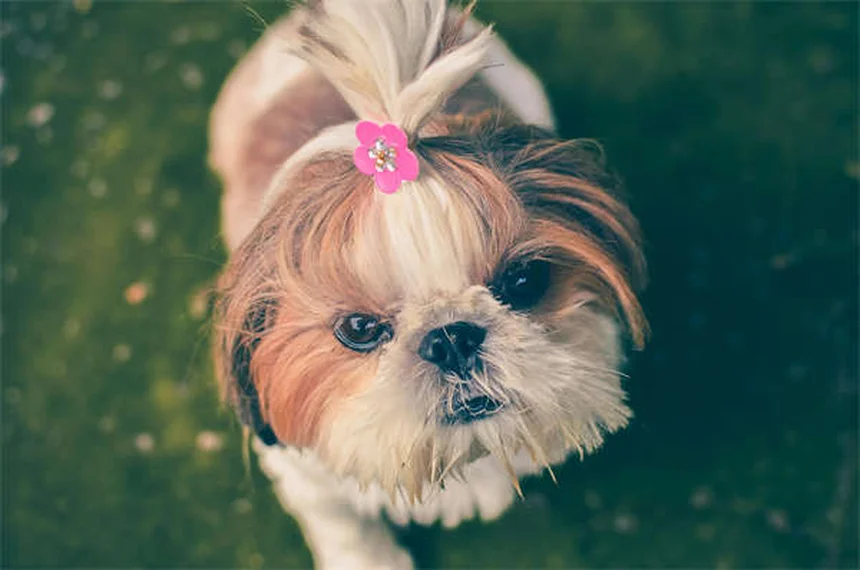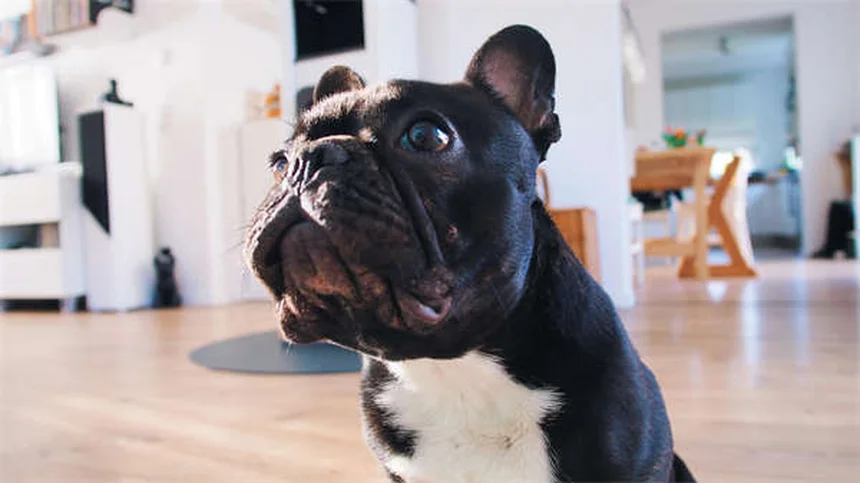Can moldy hay make your horse sick? The answer is a resounding yes - moldy hay can seriously harm your horse's health! We're talking about more than just a tummy ache here. Mold spores in hay can cause permanent breathing problems, digestive issues, and even life-threatening conditions. I've seen too many horses suffer from heaves (horse asthma) because their owners didn't check their hay properly. The scary part? Some of these conditions can't be cured, only managed. But here's the good news: with simple checks and smart storage, you can easily protect your horse from these dangers. Let me show you how to spot bad hay before it reaches your horse's mouth!
E.g. :5 Common Dog Training Mistakes That Undo All Your Hard Work
Advertisement
- 1、The Hidden Dangers of Moldy Hay for Horses
- 2、How Hay Goes From Good to Gross
- 3、Becoming a Hay Detective
- 4、Smart Solutions for Hay Storage
- 5、When in Doubt, Test It Out
- 6、The Sneaky Ways Mold Gets Into Your Barn
- 7、Mold's Dirty Little Secrets
- 8、Prevention is Cheaper Than Treatment
- 9、When Disaster Strikes: Salvaging Options
- 10、The Human Factor in Hay Quality
- 11、FAQs
The Hidden Dangers of Moldy Hay for Horses
Why Moldy Hay is Worse Than a Bad Hair Day
You know that feeling when you open your lunchbox and find moldy bread? Now imagine your horse feeling that way - but 100 times worse. Moldy hay doesn't just look gross, it can seriously mess with your horse's health.
When horses eat moldy hay, they're not just turning up their noses at bad food. They're risking:
- Breathing problems that could last a lifetime
- Digestive issues that'll have you calling the vet at 2 AM
- Weakened immune systems making them catch every bug going around
The Scary Stuff Mold Can Do
Let me paint you a picture: Your prize mare starts coughing like she's been smoking cigars. Her breathing sounds like a broken accordion. That's what we call "heaves" - basically horse asthma. And guess what? There's no cure, just management.
But wait, there's more! Mold can also cause:
| Problem | How Bad? |
|---|---|
| Colic | Emergency vet visit |
| Weight loss | Looking ribby in show season |
| Reproductive issues | Lost foals = lost $$$ |
How Hay Goes From Good to Gross
 Photos provided by pixabay
Photos provided by pixabay
When Farmers Play the Weather Lottery
Ever tried drying your laundry in a rainstorm? That's basically what hay farmers deal with. The perfect hay needs:
- Just the right cutting time (not too early, not too late)
- Sunshine for days (literally)
- A rain-free forecast (good luck with that!)
Here's a fun fact: Did you know hay can sweat? When bales are too moist, they heat up like a teenager's gym locker. That's mold's favorite party spot!
Storage Disasters Waiting to Happen
Think storing hay is as simple as throwing a tarp over it? Think again! Proper storage needs:
- Dry floors (pallets are your BFF)
- Good airflow (mold hates breezes)
- Protection from sneaky ground moisture
Ever seen hay stored directly on dirt? That's like storing your cereal in a puddle. The bottom bales will be mush by winter!
Becoming a Hay Detective
The Nose Knows: Sniff Test 101
Here's a question: Would you eat something that smells like a wet basement? Neither should your horse! The sniff test is your first defense:
- Good hay smells sweet like fresh grass
- Bad hay smells musty like grandma's attic
- Really bad hay smells like something died in it
Pro tip: If the hay makes you wrinkle your nose, it'll make your horse sick. Simple as that!
 Photos provided by pixabay
Photos provided by pixabay
When Farmers Play the Weather Lottery
Let's play spot the difference! Good hay vs bad hay:
- Color: Bright green = good, brown/gray = bad
- Texture: Leafy = good, stemmy = less good
- Dust: Some dust = normal, dust clouds = trouble
Ever found a weird plant in your hay? That's nature's way of saying "Don't feed this to your expensive show horse!"
Smart Solutions for Hay Storage
Bale Bags: Not Just Fancy Wrappers
Think of bale bags like raincoats for your hay. The good ones:
- Let the hay breathe (no sweaty bales!)
- Keep rain and rodents out
- Make transport way easier
But here's the million dollar question: Why spend thousands on a horse then cheap out on hay protection? Makes no sense, right? Investing in proper storage saves you vet bills later!
Feeders: More Than Just Convenience
Dumping hay on the ground is like serving dinner in the toilet. Hay feeders:
- Keep hay clean and dry
- Reduce waste (money in your pocket!)
- Let horses eat naturally (heads down = happy airways)
Ever seen a horse sneeze while eating? That's dust and mold spores saying hello to their lungs. Not a friendly greeting!
When in Doubt, Test It Out
 Photos provided by pixabay
Photos provided by pixabay
When Farmers Play the Weather Lottery
Not sure about your hay? Get it tested! Modern tests can tell you:
- Exactly what molds are present
- Nutrient levels (bonus info!)
- Whether it's safe for sensitive horses
Here's something to think about: Would you feed mystery meat to your family? Then why feed mystery hay to your horse? Testing gives you peace of mind!
Alternative Options for Picky Eaters
If your local hay looks sketchy, consider:
- Compressed bales (like hay in a spacesuit)
- Hay cubes (convenient and consistent)
- Complete feeds (for when hay just won't cut it)
Remember - good hay keeps your horse healthy, and healthy horses win ribbons. That's math even I can understand!
The Sneaky Ways Mold Gets Into Your Barn
Moisture: The Silent Hay Killer
You wouldn't leave your phone out in the rain, so why risk your hay? Moisture is mold's best friend, and it finds ways into your barn you'd never expect.
That morning dew you think is harmless? It adds up! I've seen bales go bad just from being stored near an open window where condensation collects. And don't get me started on leaky roofs - one small drip can ruin an entire stack before you notice. The worst part? By the time you see visible mold, the damage has been brewing for weeks.
The Temperature Rollercoaster
Ever notice how your hay smells different after a cold snap? That's because temperature swings create perfect mold-growing conditions.
Here's what happens inside those innocent-looking bales: Warm days cause moisture to evaporate from the hay, then cool nights make that moisture condense again. This daily cycle is like giving mold a gym membership - it grows stronger every day. I once tracked temperatures in a barn over winter and found spots where the daily swing was 30°F! No wonder those bales molded.
Mold's Dirty Little Secrets
Not All Mold is Created Equal
Think all mold is the same? Think again! Some types are worse than others.
| Mold Type | How Common | Danger Level |
|---|---|---|
| Aspergillus | Very common | Can cause lung infections |
| Fusarium | Moderately common | Produces nasty toxins |
| Penicillium | Less common | Mostly just stinks |
The scary part? You can't tell which is which just by looking. That white fuzz could be relatively harmless, or it could be a serious health risk. That's why testing matters!
The Domino Effect of Moldy Hay
One bad bale can ruin your whole stack faster than you can say "vet bill."
Mold spreads through spores that travel on air currents. I've seen cases where a single moldy bale at the bottom of a stack contaminated everything around it within two weeks. And get this - those spores can survive in your barn for months, waiting for the right conditions to grow again. It's like that one bad apple saying, but way more expensive when it's your hay!
Prevention is Cheaper Than Treatment
The 24-Hour Rule for New Hay
Here's a trick I learned the hard way: Never stack new hay directly with old hay.
New hay often needs time to "settle" and finish sweating. Stack it right away, and you're trapping moisture that can lead to mold. I always keep new deliveries separate for at least a day, checking for heat buildup. One time I ignored this rule and lost $500 worth of hay in a month. Ouch!
Rotation: Not Just for Crops
You rotate your tires, so why not your hay?
Using older hay first seems obvious, but you'd be surprised how many people grab from the front of the stack because it's convenient. I number my stacks and keep a simple log - when it came in, where it's stored, when to use it. This system saved me when I discovered a moisture problem - I could pull just the affected bales instead of guessing.
When Disaster Strikes: Salvaging Options
The Great Hay Wash Debate
Can you wash moldy hay? The answer might surprise you.
While soaking hay can reduce dust and some surface mold, it's not a magic fix. The nutrients leach out, and deep mold isn't affected. I only recommend this for horses that absolutely must eat questionable hay - like during shortages - and even then, limit it to short soaks of 10-15 minutes. Any longer and you're basically making hay tea!
Alternative Uses for Bad Hay
Before you dump that moldy hay, consider these options:
Composting can break down mold safely if your pile gets hot enough. I've also used slightly questionable hay as mulch in non-edible gardens - just keep it away from plants you'll eat. One creative barn owner I know uses old hay as insulation in outbuildings! Just remember - if it's seriously moldy, wear a mask when handling it. Your lungs will thank you.
The Human Factor in Hay Quality
Building Relationships With Growers
Your hay supplier should be like your mechanic - someone you trust.
I make a point to visit my hay grower every season. Seeing their operation tells me more than any sales pitch. Are their bales stored properly? Do they test their hay? How do they handle weather challenges? Last year, my regular grower showed me how he uses moisture meters before baling - that's the kind of detail that builds confidence!
The True Cost of Cheap Hay
Ever wonder why some hay is so much cheaper?
Here's the thing: Good hay costs more for a reason. Better growing conditions, proper drying time, careful storage - it all adds up. I keep a simple spreadsheet comparing hay prices to vet visits, and guess what? The "expensive" hay usually wins. One client saved $1200 in vet bills just by switching to premium hay. Now that's what I call smart shopping!
E.g. :Mold and Mycotoxins in Horse Hay
FAQs
Q: How can I tell if my horse has eaten moldy hay?
A: Watch for these warning signs: coughing that won't quit, nasal discharge that looks like bad allergies, or breathing that sounds like a broken accordion. Your horse might develop a "heave line" - that's when their belly muscles get overworked from trying to breathe. Digestive issues like colic or diarrhea are red flags too. If your mare suddenly loses a pregnancy or delivers a weak foal, moldy hay could be the culprit. Bottom line? If your horse acts sick after eating hay, stop feeding it immediately and call your vet. Better safe than sorry when it comes to your horse's health!
Q: What's the best way to store hay to prevent mold?
A: Think of hay storage like protecting your favorite leather boots - keep them dry and airy! Always store hay off the ground (pallets work great) in a well-ventilated barn or shed. If you must store outside, use breathable bale bags (not just any tarp!) and make sure water can't pool on top. Here's a pro tip: leave space between bales for air to circulate. Stacking them too tight is like putting wet towels in a gym bag - mold city! And whatever you do, never store hay directly on concrete or dirt floors - that moisture will creep up into your bales faster than you can say "vet bill."
Q: Can I just cut out the moldy parts and feed the rest?
A: That's like scooping the mold off jam and eating the rest - not a good idea! Mold spores spread invisibly through hay, so what looks clean might still be contaminated. Some molds produce toxins that aren't destroyed by heat or cooking. Even small amounts can make sensitive horses sick over time. My rule? When in doubt, throw it out. Your horse's health isn't worth the risk. Instead, invest in quality hay storage solutions or consider compressed hay products that stay fresh longer. Remember: one bad bale can cost more in vet bills than replacing your whole hay supply!
Q: Are some horses more sensitive to moldy hay than others?
A: Absolutely! Just like people, some horses have super sensitive systems. Young foals, older horses, and pregnant mares are especially vulnerable. Performance horses and those with existing breathing issues (like heaves) react worse to mold. I've seen two horses eat from the same bale - one gets a slight cough, the other ends up in emergency care. Here's the thing: even if your horse seems fine now, repeated exposure to mold can develop sensitivity over time. That's why I recommend testing your hay if you have valuable or sensitive horses - it's cheap insurance against big problems!
Q: What are good alternatives to traditional hay bales?
A: If moldy hay is a constant headache, try these cleaner options: Compressed hay bales (they're shrink-wrapped at peak freshness), hay cubes (consistent quality every time), or complete feeds (perfect for picky eaters). I'm a big fan of bagged forage systems - they keep hay fresh for months and reduce waste. For show horses or those with breathing issues, consider steamed hay - it kills mold spores while keeping nutrients. The key is finding what works for your situation. As my grandpa used to say: "Pay now for good feed, or pay later for the vet" - and he wasn't wrong!
